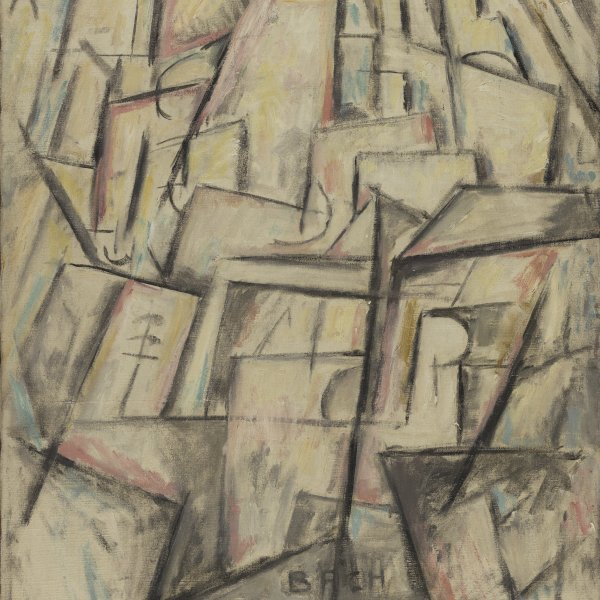Marsden Hartley
Lewiston, 1877-Ellsworth, 1943
Mardsen Hartley belonged to the group of avant-garde artists associated with Alfred Stieglitz, who strove to breathe new life into the American art scene and were interested in the trends of renewal that emerged in Europe in the early twentieth century.
Hartley began his training in 1896 with the local painter John Semon. After studying at the Cleveland School of Art (1898–99), the Chase School of Art (1899) and the National Academy of Design (1900–4), he moved to Boston where he became acquainted with the work of Maurice Prendergast. From 1909 onwards he lived in New York, where Stieglitz encouraged him to travel to Paris in 1912. Shortly after arriving in the French capital he met Gertrude Stein and, through her, Pablo Picasso. His interest in Paul Cézanne resulted in a series of works executed in a Cubist style. However, Hartley soon felt more of an affinity with the sensibility of German art, specifically the theory and oeuvre of Wassily Kandinsky, whom he met in Germany together with Franz Marc in 1913. Hartley took up residence in Berlin in 1914. His relationship with a Prussian officer led part of his works to depict army themes, especially when the officer died that October. As a counterpoint he also produced works depicting themes relating to the world of the American Indians. All his works from that period are executed in the same personal style that is a blend of synthetic Cubism and an Expressionistic use of colour.
The First World War forced him to return to the United States, a country with which he had severed practically all links and where paintings that exalted the Prussian army were not well received. He initially continued with his abstraction-linked style, now centred on the boats he observed during the summer he spent in Provincetown in 1916, but soon gradually returned to figurative creations, especially landscapes and still lifes. During the following years he travelled frequently and resided in Maine, New York, New Mexico and Gloucester, among other places, returning to Europe in 1921. In 1937 he settled permanently in Maine, where he painted landscapes and portraits until the end of his life.
Hartley began his training in 1896 with the local painter John Semon. After studying at the Cleveland School of Art (1898–99), the Chase School of Art (1899) and the National Academy of Design (1900–4), he moved to Boston where he became acquainted with the work of Maurice Prendergast. From 1909 onwards he lived in New York, where Stieglitz encouraged him to travel to Paris in 1912. Shortly after arriving in the French capital he met Gertrude Stein and, through her, Pablo Picasso. His interest in Paul Cézanne resulted in a series of works executed in a Cubist style. However, Hartley soon felt more of an affinity with the sensibility of German art, specifically the theory and oeuvre of Wassily Kandinsky, whom he met in Germany together with Franz Marc in 1913. Hartley took up residence in Berlin in 1914. His relationship with a Prussian officer led part of his works to depict army themes, especially when the officer died that October. As a counterpoint he also produced works depicting themes relating to the world of the American Indians. All his works from that period are executed in the same personal style that is a blend of synthetic Cubism and an Expressionistic use of colour.
The First World War forced him to return to the United States, a country with which he had severed practically all links and where paintings that exalted the Prussian army were not well received. He initially continued with his abstraction-linked style, now centred on the boats he observed during the summer he spent in Provincetown in 1916, but soon gradually returned to figurative creations, especially landscapes and still lifes. During the following years he travelled frequently and resided in Maine, New York, New Mexico and Gloucester, among other places, returning to Europe in 1921. In 1937 he settled permanently in Maine, where he painted landscapes and portraits until the end of his life.





